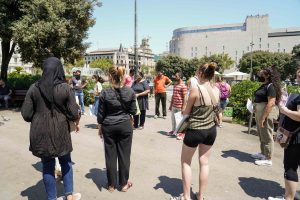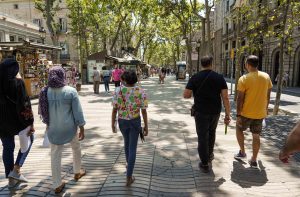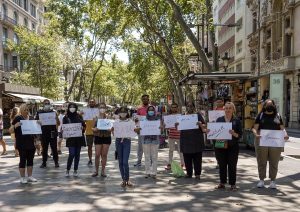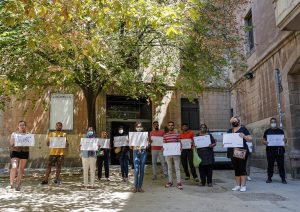Activity 12: “Put Your Name On It!”
Overview of the activity
Participants connect to city heritage in a personal and meaningful way through a very simple performance: they will write their names on a piece of paper and take them through the streets and sites they inhabit every day.
Objectives
- Generate a safe space for dialogue about our personal history.
- Provide strategies for respectfully approaching an unfamiliar name.
- See how a proper name can be a patrimonial element, in which personal and collective history, family, group and historical meanings are mixed.
- Connect to city heritage in a personal and meaningful way.
- Reflect on how heritage is present in one’s current life and is related to one’s identity.
- Link personal history, public space and tangible and intangible heritage.
| Duration (in minutes) | Min/max number of participants | Room/space requirements |
| 60 minutes |
|
A comfortable room in which participants can move around |
| Minimum knowledge requirements from participants | Materials needed | Preparation |
| No requirements |
|
No preparation is required |
Instructions
- Give a blank card and a marker to each participant.
- Each person writes their full name in large letters on the card in the local language and in their language of origin. [name 1] [name 2] [name 3]
- Each participant must explain the origin and meaning of their name to the rest of the group, showing everyone the card and clarifying spelling and pronunciation preferences. The following questions may guide participants in talking about their names:
- Who named you and why were you given your name?
- What meanings does your name have for you?
- What hopes and dreams does your name hold for the people who gave you your name?
- Is your name easy for other people to pronounce?
- If you have a name that is challenging for others to pronounce, what can you do to help them learn your name?
- Explain to the group that they will be walking outdoors and decide together on three meaningful places for the group to walk to that are close by (for the sake of time, avoid places that are more than a 5 minute walk away). You can also choose to just walk around the streets nearby and spontaneously choose the places as you encounter them.


- The whole group walks through the streets of the city and stops at elements of the architectural heritage they previously decided on (or spontaneously come across). At each place they publicly show the cards with their names.
- Pictures are taken at each site.
- The scene can be repeated in several places.
- At the end, participants share their experiences and feelings of the performance.


Learning outcome / evidence collected
Evaluation
During the debriefing, ask participants about how they felt, what was difficult or easy, if they noticed differences and similarities between the different names, if they were surprised or discovered something new about themselves or about others, etc. Allow them to openly discuss their experiences, always reminding them there is no right or wrong answer. Some additional questions that could be asked:
- What was easy and what was difficult about showing your name in public?
- Did you discover something about the city’s heritage that you had not noticed before?
- What did you like and/or dislike? Were there moments of pleasure? Were there moments of conflict?
Additional resources
